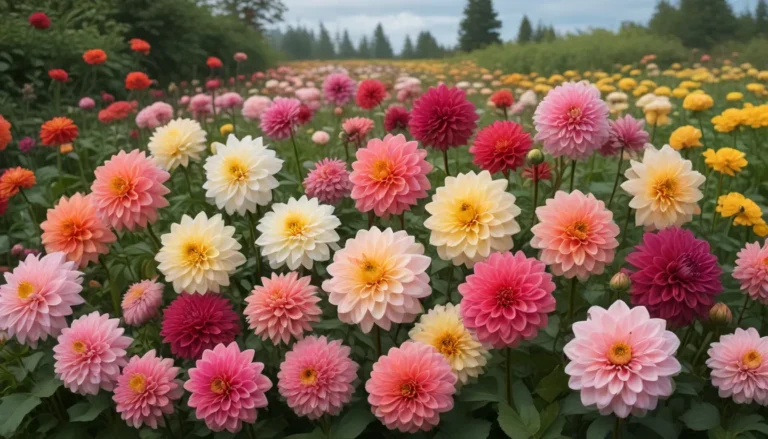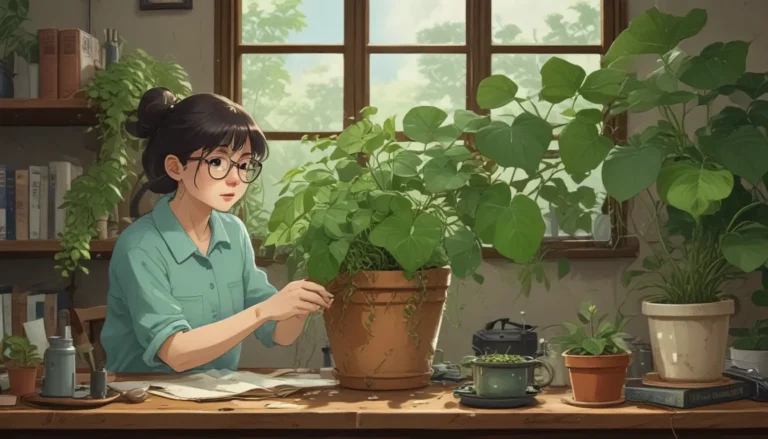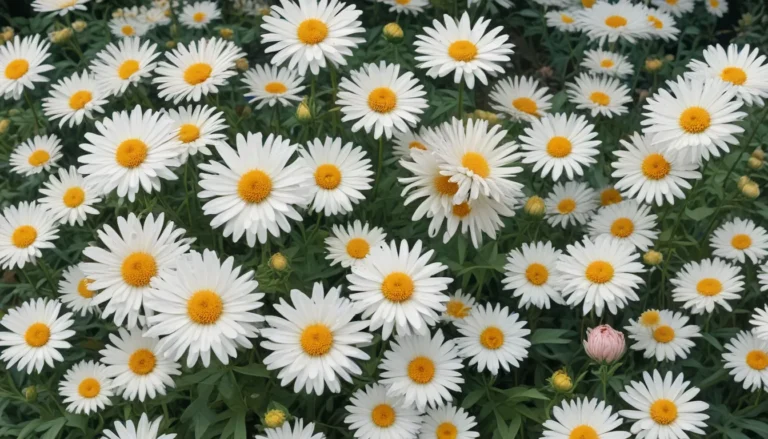Everything You Need to Know About Growing and Caring for Deptford Pinks

Are you looking for a delicate, yet tough addition to your garden? Look no further than Deptford pinks! These slender plants with vividly bright pink flowers are a charming choice for any garden setting. While they may not be the trendiest plant at the moment, their resilience and adaptability make them a valuable addition to any landscape.
In this comprehensive guide, we will delve into everything you need to know about growing and caring for Deptford pinks. From their cultivation and history to propagation, growing tips, pruning, and maintenance, we’ve got you covered. So, let’s get started by exploring what Deptford pinks are all about!
What Are Deptford Pinks?
Deptford pinks, also known as grass or mountain pinks, belong to the Dianthus genus and go by the scientific name Dianthus armeria. Native to Europe, these delicate plants are now naturalized in North America and New Zealand. With their striking pink flowers and slender stems, Deptford pinks add a touch of elegance to any garden.
These plants are known for their annual or biennial growth habit, with the potential to survive as short-lived perennials under ideal conditions. While their flowers may be small, they pack a punch with vibrant colors ranging from shocking pink to pale blush. As self-pollinating plants, Deptford pinks readily self-seed, providing a perennial-like performance in the garden.
Cultivation and History
The name “Deptford pink” was coined by naturalist Thomas Johnson in 1633, though it was later discovered that the flower found in Deptford was actually maiden pinks. Despite this misidentification, Deptford pinks have made a name for themselves in Europe and beyond. With their naturalization in various regions and their escape from cultivation, these plants have become a beloved non-native wildflower.
Propagation
When it comes to propagating Deptford pinks, your best bet is through seeds or stem tip cuttings. While their slender taproot makes division challenging, propagation through cuttings or seeds is relatively straightforward. From taking stem cuttings to starting seeds indoors, there are various methods to propagate these charming plants successfully.
From Cuttings
- Take tip cuttings of non-flowering stems in mid-spring to early summer.
- Dip the stripped end in rooting hormone if desired.
- Insert stems into a well-draining potting medium and keep them in a bright location until rooted.
From Seed
- Start seeds indoors for first-year flowers or direct-sow outdoors for blooms the following year.
- Cold stratify seeds before sowing outdoors to enhance germination rates.
How to Grow
To ensure the successful growth of Deptford pinks, it’s essential to provide them with fertile, well-draining soil, full sun exposure, and ample space to thrive. With their good cold and drought resistance, these plants are ideal for containers, rockeries, or xeriscape gardens. By following proper planting and watering practices, you can enjoy a bountiful display of colorful flowers throughout the summer.
Growing Tips
Here are some essential tips for cultivating healthy Deptford pinks:
– Grow in full sun for optimal flowering.
– Plant in well-draining soil to prevent issues like crown and root rot.
– Allow the soil to dry out between watering to avoid waterlogged conditions.
Pruning and Maintenance
To keep Deptford pinks looking their best, regular deadheading, feeding, and winter maintenance are crucial. By removing spent flowers, providing nutrients, and protecting plants during the winter months, you can ensure year-round health and vigor for these lovely plants.
Where to Buy
While Deptford pink seeds may not be as common as other garden varieties, you can still find them in select stores or online retailers. Look for reputable seed suppliers to get your hands on these charming plants for your garden.
Managing Pests and Disease
Like all plants, Deptford pinks are susceptible to pests and diseases. From aphids to fungal infections, it’s essential to monitor your plants for any signs of trouble and take appropriate measures to control these issues. By practicing good garden hygiene and preventative measures, you can keep your Deptford pinks healthy and thriving.
Best Uses
Deptford pinks are versatile plants that can be used in various garden settings. Whether in containers, rock gardens, or wildflower meadows, these plants add a touch of elegance and color to any landscape. By incorporating Deptford pinks into your garden design, you can enjoy their delicate beauty year after year.
Quick Reference Growing Guide
Here’s a quick overview of the essential details you need to know about Deptford pinks:
– Plant Type: Short-lived perennial
– Flower/Foliage Color: Freckled shocking pink/medium green
– Native to: Europe
– Water Needs: Low once established
– Hardiness (USDA Zone): 3-8
– Tolerance: Deer, rabbits, rodents
– Bloom Time/Season: Summer
– Maintenance: Low
– Exposure: Full sun
– Soil Type: Sandy loam
– Soil pH: 6.0-8.0
– Spacing: 10 inches
– Soil Drainage: Well-draining
– Attracts: Bees, butterflies
– Height: Up to 24 inches
– Uses: Containers; cut arrangements; gravel, rock, and xeriscape gardens; naturalized settings
Delicate, But Tough
Despite their delicate appearance, Deptford pinks are hardy plants that can withstand harsh conditions and still thrive. By following the tips and guidelines outlined in this guide, you can grow and care for these charming plants with confidence. Whether you’re a seasoned gardener or a novice enthusiast, Deptford pinks are a valuable addition to any garden setting.
Are you ready to add a touch of elegance to your garden with Deptford pinks? Share your thoughts and experiences in the comments below. And for more information on growing dianthus flowers, check out our related articles for additional insights and tips. Happy gardening!





